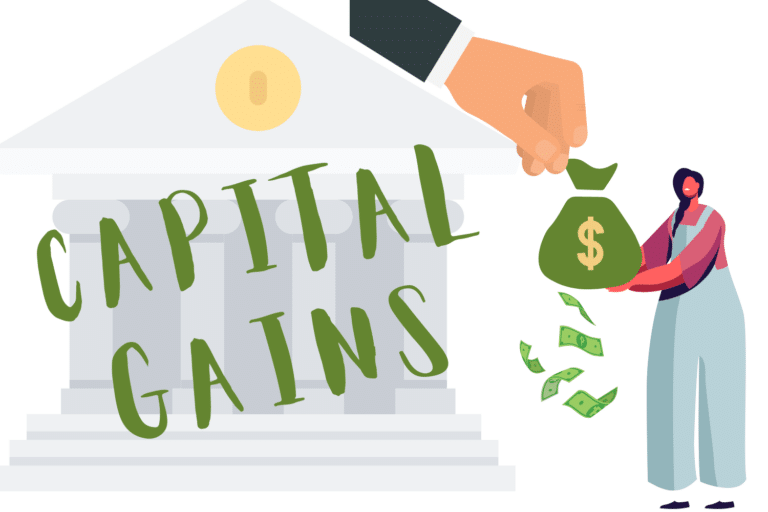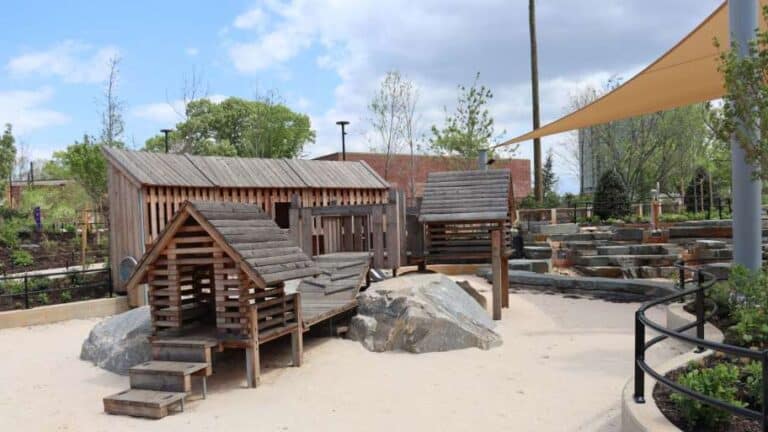Mid-Term Rentals: An Expert Analysis of Real Estate Investment Strategies
Introduction: Decades of Rental Management Experience
We’ve managed long-term and mid-term furnished rentals since before Airbnb existed, so we’ve seen a lot of trends come and go.
Starting in late 2024, we suddenly began seeing a major increase in the number of owners who were contacting us specifically to discuss mid-term furnished rental rates. That has continued into mid-2025, and the issues that’ve been coming up regarding that decision led us to realize that it was a topic in dire need of discussion.
The Harsh Reality of Mid-Term Rental Strategies
In this article, we aren’t going to imply that mid-term rentals as a whole are a bad strategy, but they are for most owners by most reasonable measures. The primary reason is that the spread between long-term rentals that are a life staple, and shorter-term furnished rentals that are often highly correlated to economic or tourist activity is extremely small.
Financial Insights and Rental Performance
To be clear, the vast majority of owners who’ve contacted us seeking information on this idea over the past 12 months could likely earn 70% of the “net rent”, with a long-term strategy instead of mid-term, when both are run very well.
That’s without the cost of utilities, furnishing the home, repairing and replacing furniture, added risk of major vacancy and economic shock, and more. It also dramatically reduces the stress, headache, and increased management costs (whether it’s you or a company, more work means increased management costs) that are a given whenever you are turning the home over multiple times per year and building brand new relationships.
The Hidden Costs of Mid-Term Rentals
Even in an excellent scenario, you would have to work a lot harder to earn about 30% net rent, and most of that would go to the increased cost.
The Complexity of Short-Term Rental Markets
The problem with shorter terms is that they are risky and very hard. Sure, it’s easy to put a home on the market and earn some rent, but it’s extremely difficult to maximize the potential of that home, especially since you have such a phenomenal long-term alternative.
It tends to take a year to “feel” out a new short or mid-term rental. Get it on the market, get feedback of all kinds from income to surveys and reviews, but also the much more complex “optimal rent to vacancy ratio” that is so well known in economics. If I sell two lemonades at $7 a piece and 3 at $5, what is the optimal price? Probably two because the risks, input costs, and work involved are all lower, even though the top-line revenue is better. You have to run a similar but much more complex process to learn the optimal rent, and then you have to nail that down at a seasonal level as well.
Investment Requirements and Market Challenges
So the investment to legitimately convert a home to a mid-term rental is enormous. You have to dramatically outfit the home with 10’s of thousands of dollars in short-lived, often premium furnishings and living supplies. Then you need a solid year at least to feel out the market, build a marketing footprint, and understand how the market feels about your product well enough that you can deliver consistent move-ins with little vacancy, but also without underpricing the home.
Make Your Home Stand Out With This Guide To Getting Perfect Rental Presentation Pictures
Common Owner Misconceptions
A common theme we’ve seen lately is that owners think they can skimp on the furnishings. We were recently asked to estimate a mid-term rate for a middle-aged suburban 3,000 sqft home that was outfitted with about $5,000 in furniture at most, including an air mattress for a primary bed.
Landlords, for whatever reason, tend to be driven a lot by personal preference and emotion. That’s a classic recipe for disaster, or at least serious underperformance. If that goes on for years it compounds and makes the difference between a very unrewarding experience and one that provides wealth. They are also often long-time homeowners and think like homeowners. Renters think very differently (they are extremely practical), and travelers think differently still (they are impractical in many cases).
The Emotional Pitfalls of Short-Term Rentals
Mid-term rentals create a ton of opportunities for the biggest impediments to being a successful rental investor (emotions, personal bias, and micro-management) to become a massive problem.
With long-term rentals, even tightly strung landlords have a chance to thrive. The fact that they rarely ever have to think about the home helps them to stay out of it. With short or mid-term rentals, the decisions are much more complex, owners typically need to be involved (selecting replacement furniture and approving rent adjustments based on economic and seasonal issues), and opening that door is simply bad for a large portion of homeowners.
A Cautionary Tale: The Dangers of Emotional Decision-Making
To put into perspective the kinds of mistakes landlords make all the time, I love to tell a story about when I was in college. I called a private landlord about a house I really wanted to rent, and in the course of 3 minutes, she had gone out of her way to tell me that the last tenants had a party, so the neighbor came over with a shotgun and put that to rest. I thought, hmm, I don’t think I want to live next to that lunatic, and moved on without a second thought. Who would feel comfortable living next to someone who threatens to shoot you on a regular basis? How do you think that rental performed? College students aren’t a protected class. Why not take the professional route and offer the home at a price a single-income household can afford, and state in the ad no college students? Presumably, it’s because the owner was hoping to have their cake and eat it too. Earn the higher rental rates often associated with a college-style lease that often has 4 separate incomes, without the hassles so common with those exact leases. In housing, you usually just eat it. Perhaps they succeeded, but more often than not, they suffer dramatically every year, and that is likely one of many similar mistakes that landlord consistently makes.
The Illusion of Higher Returns
You see similar issues with shorter terms. Like college rentals, they can earn more rent. Owners often get starry-eyed at that prospect, but they fail to recognize that there are a lot more potential problems and duties as well.
That would be fine if you earned dramatically higher rents, but we noted that the average house can hope to earn about 30% more “net rent” while taking on much higher risk and cost. In most cases, if you do the math, that is not remotely close to worth it, and those owners are making a huge mistake. In the end, most will have much lower net income than if they had hired a competent manager to do 90% of the work for them.
In effect, it’s a similar situation to the tortoise and the hare. The hare is sharp and flashy, but the tortoise wins the race.
The Rare Success Stories
Some mid-term rentals make amazing investments, but what landlords seem to misunderstand is that the cases you hear about are so rare that it’s why so many hear about them. Like sasquatch, we’ve all heard of enormous rental income on Airbnb, and when we rent these amazing beach and mountain cabins, we love to crunch the numbers and talk about how we, too, could make a fortune on this home. Unfortunately, we are rarely crunching the numbers properly, and when we do, we often fail to see the immense planning, thought, and effort that went into this exceptional situation.
Assuming that the same strategy will work well for a suburban home where most new construction is occurring (a steady flow of competition tends to hold back long and mid-term rates, but mid-term in particular) and there is often not a lot separating one neighborhood from the next, is simply not feasible.
The Business-Like Nature of Mid-Term Rentals
Running a mid-term rental is more like running a business than a rental home. Bottom line, it’s actually a result of the Airbnb effect. As unique homes did earn enormous rents, millions of Americans went sasquatch hunting, and things got extremely competitive. The best-performing rentals are well-oiled machines, often with massive capital outlays taken at enormous risk. Then owners started thinking that this suburban house I want to keep due to my 3% mortgage (you absolutely should keep it) will break even on the long-term market, and I want to make some money. I bet if I go mid-term, I can double my returns.
That was never the case for most homes, but the reason we’ve seen such a huge uptick in management requests of late is because the work involved, competition, and fees finally started to come into clear focus as a result of one of those mega post-COVID unwind trends. Once the best-run rentals started cutting prices to deal with a major decline in interest and demand, the marginal listings began to struggle immensely.
Market Saturation and Competition
As we already noted in the shorter-term market, you must be responsive and nimble, and personal bias tends to limit that approach in particular. So we entered a perfect storm in the short-term world.
That’s when everyone, almost all at once, decided the best place to find sasquatch was in mid-term rentals. However, if there’s a huge crowd all in one place, it’s unlikely the rare beast will pop up and pull up a chair. As with Airbnb, the crowd crowded into a similar trend again, expecting to be the one that gets the prize.
With Airbnb, you have huge potential for profit on a single home. With mid-terms, you have decent potential for profit, but nearly all the same risks and sometimes even more (long-term vs short-term evictions).
Conclusion: A Balanced Perspective
Again, we are not going to imply that mid-term rentals are a bad idea across the board; we just wanted to highlight a trend we’ve seen at a shockingly large scale that, based on our involvement estimating mid and long-term rates, is a very bad strategy for the average homeowner.
We have a saying around our company, “We love that tortoise money.” The reason is that if handled properly, it can be extremely low risk, low stress, and still very profitable. It can allow us to keep our 3% mortgage while freely moving anywhere we want to be. Mid-term rentals almost never offer that. Many of our long-term owners take the proceeds they earn in just two years and use those funds to embark on a strategy of rolling one investment into the next and, as a result, build real wealth. That same strategy on the mid-term market can easily lead to bankruptcy if the market turns against you as it did in 2008, with COVID, and to a degree in 2024. All that time, long-term rentals just kept chugging along, earning consistent increases that far outpaced inflation and, for many years, the cost of homeownership. With such an easy decision, it seems clear what strategy is best in most cases.
The Airbnb unwind continues to this day, even as long-term rents in most of our markets have clearly bottomed and are moving higher.











